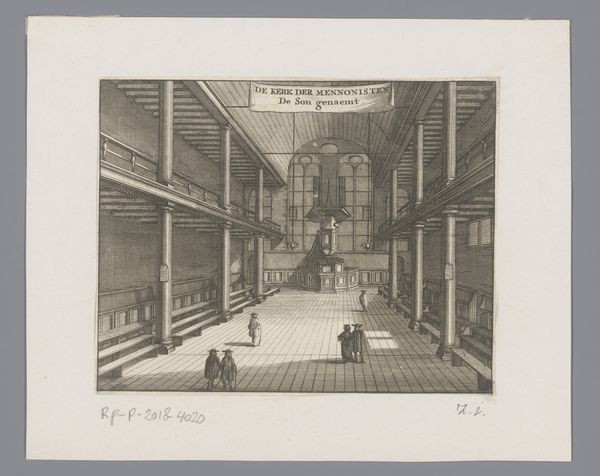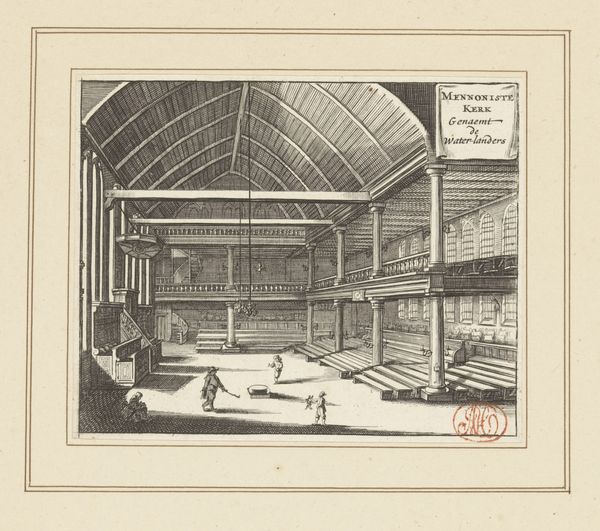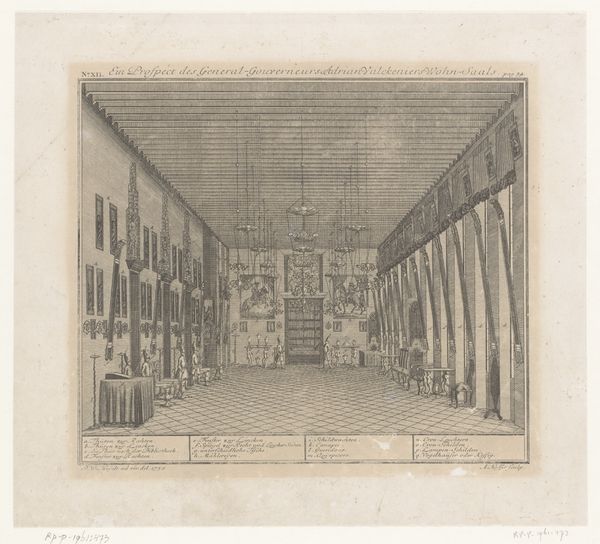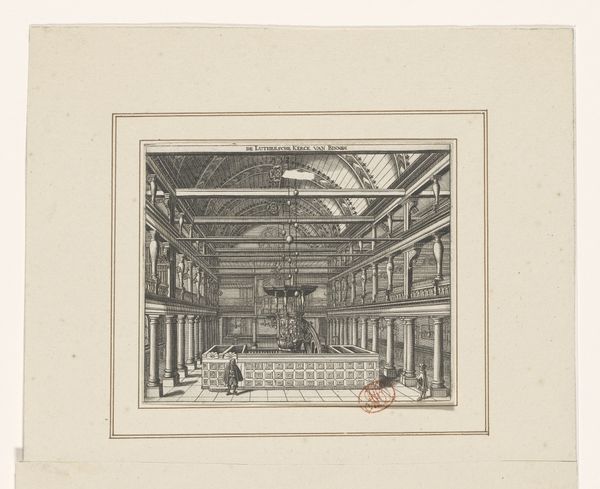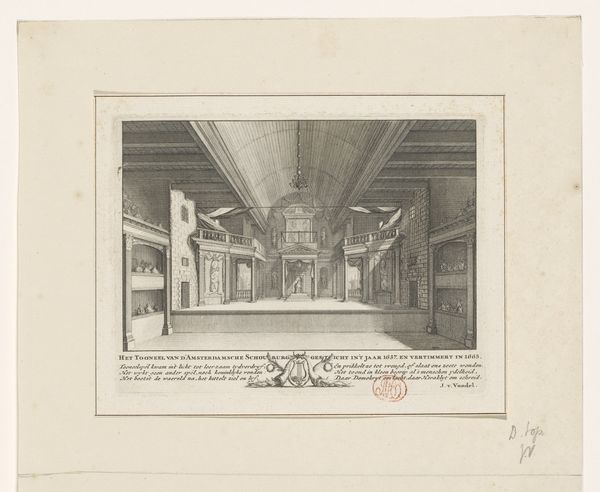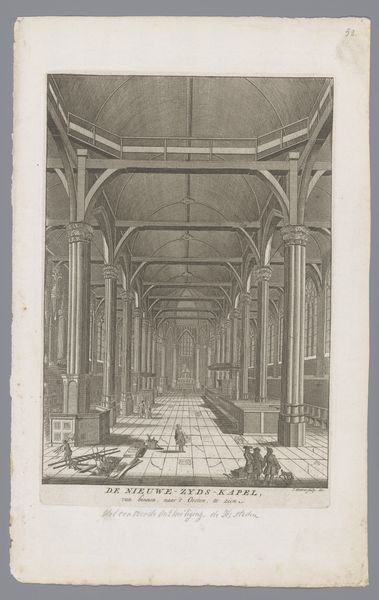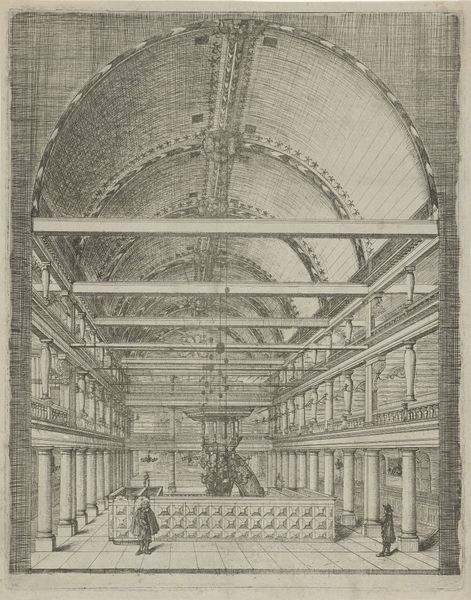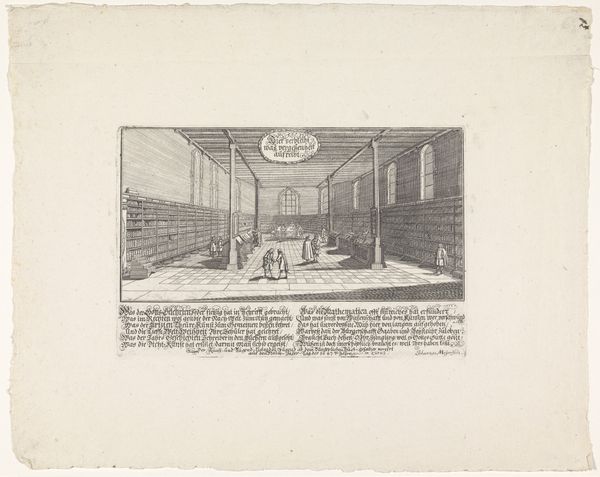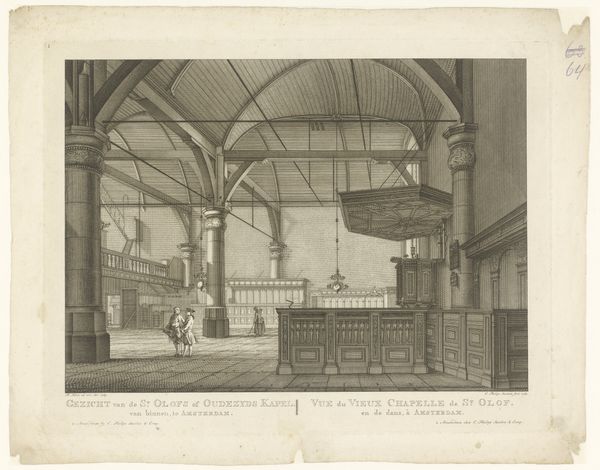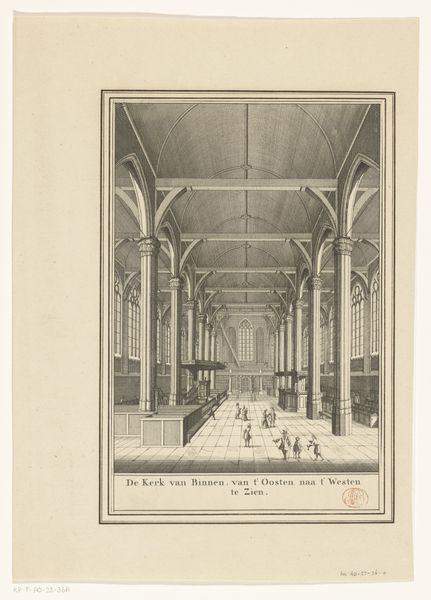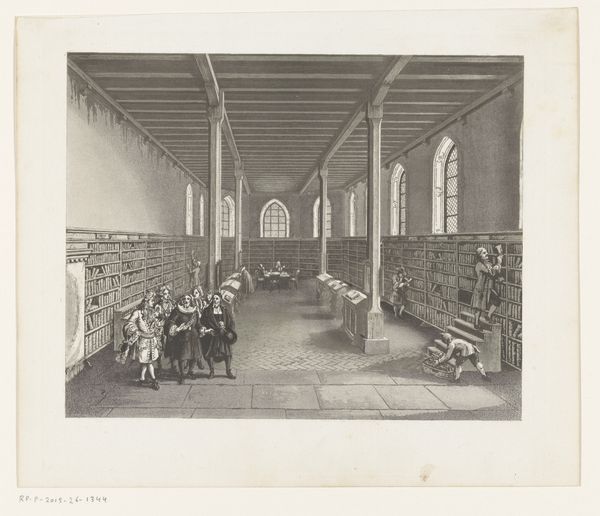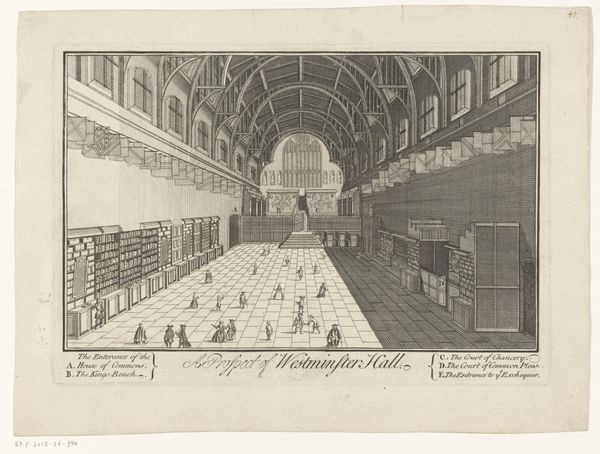
Gezicht op het interieur van de Doopsgezinde kerk De Zon te Amsterdam 1693 - 1694
0:00
0:00
print, engraving
#
dutch-golden-age
# print
#
geometric
#
engraving
#
realism
Dimensions: height 126 mm, width 161 mm
Copyright: Rijks Museum: Open Domain
Curator: Welcome. Here we have an engraving from 1693-1694. It presents an interior view of the Mennonite church "De Zon" in Amsterdam. Editor: Immediately, I’m struck by the emptiness. The light hits all these stark wooden benches and emphasizes the building’s cubic design. It seems built for labor more than prayer. Curator: Precisely! Religious tolerance was evolving in the Dutch Golden Age. Mennonites, who favored simpler worship spaces, started building places like this in more prominent public locations. The building becomes a symbol of changing social values. Editor: Right, and look at how the engraver renders that wood. The texture of the roof's paneling and the seating are built into the viewing experience. The church, made for and by the community, is represented through these very hands-on printmaking techniques. Curator: That directness you observe, its stark, geometric visual language, reflects a societal move towards realism that permeated many aspects of Dutch society and art. Editor: So different from the soaring ceilings of cathedrals meant to awe. This design really underscores a particular form of functionality. How it's used dictates the design, which seems built as a gathering space and communal working area. Curator: You’re right. Unlike overtly opulent churches, the "De Zon" signifies community engagement within Amsterdam's unique social tapestry. Editor: Seeing it detailed like this reminds me of all the work and time and labor needed to erect the building—to say nothing of making the artwork. You get a clear sense of social realities involved with places of worship and their visual representation. Curator: Yes, it presents us a compelling insight into the shifting landscape of faith, community, and the public sphere of the late 17th-century Netherlands. Editor: Well, by exploring how the space and this engraving was crafted, perhaps we better appreciate the role buildings—and prints—can have on shaping ideas and our interactions with both physical spaces and artworks alike.
Comments
No comments
Be the first to comment and join the conversation on the ultimate creative platform.
